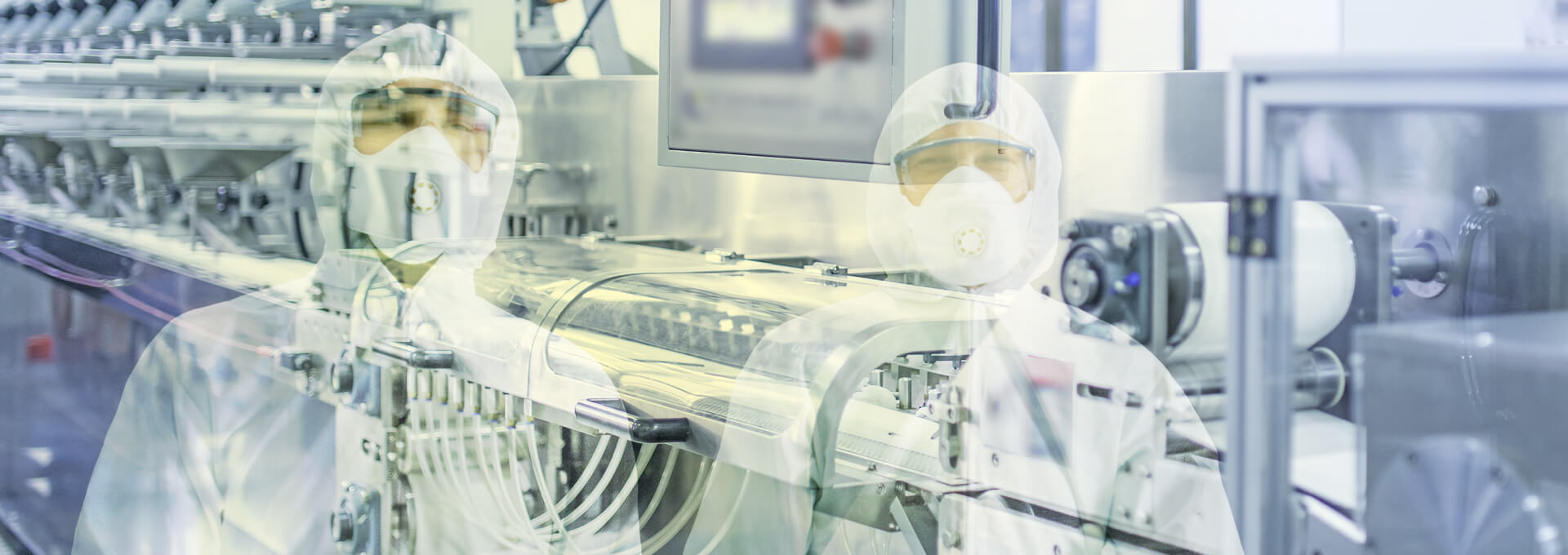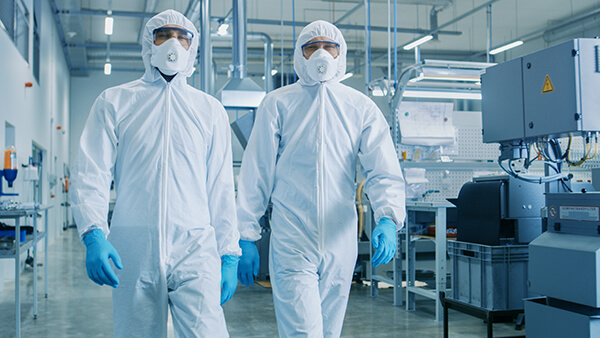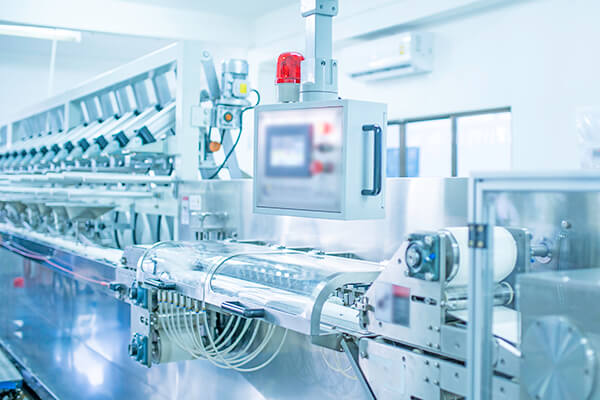In-process Microbial Control During Aseptic Processing – Medium Risk

This is the thrid article of a series on microbial contamination of pharmaceuticals.
Drug manufacturers still employ practices that pose risks of contamination to sterile drug products. This article addresses best practices that should be used to further reduce the risk of microbial contamination of sterile drug products that can cause bacterial infections in patients.
Looking at current practices utilized in the manufacture of sterile injectable drug products, there are three general risk classes based on the presence of personnel in proximity to open containers and routes of exposure to contamination sources. Each risk class is associated with specific aseptic processing manufacturing operations currently in use. The high-risk aseptic processing classification was discussed in Part 1 and Part 2 of this series of articles. This article focuses on the medium-risk aseptic processing classification, which is most often utilized by many generic sterile drug manufacturers, contract manufacturing organizations, and some smaller new drug or biologic manufacturing companies.
Drug and biologics manufacturers should carefully evaluate the risk class that applies to their aseptic manufacturing process. Additional information on contamination sources and contaminants is discussed in Table 1.
Environmental monitoring is used as a tool to evaluate processing and operational task suitability and the cleanliness levels achieved in cleanroom and work environments used during aseptic processing. An effective environmental monitoring system is a prerequisite that must be established before aseptic operations commence. Additional information on environmental monitoring can be found in PDA’s Technical Reports No. 13 (Revised 2022) Fundamentals of an Environmental Monitoring Program and Technical Report No. 13-2: Fundamentals of an Environmental Monitoring Program Annex 1: Environmental Monitoring of Facilities Manufacturing Low Bioburden Products (2020).
All aseptic drug manufacturers should consider using processes in a low-risk aseptic processing classification to ensure that patients, many of whom may be in poor health, receive the highest level of protection against infection when they receive ophthalmic or injectable drug products. Patient adverse events, recalls and drug shortages could be reduced by diligently applying low-risk aseptic processing. Although the initial costs may be higher due to its design, low-risk aseptic processing could reduce the cost of manufacturing due to lower facility, labor and cleaning costs.
The following analysis identifies significant issues and provides the best practices to be utilized for the medium-risk class in aseptic processing. A firm must understand and follow all regulatory guidance as a prerequisite applicable to its aseptic filling operations. This article does not address terminally sterilized drug products. A subsequent article will address low-risk aseptic processing.
Medium-Risk Aseptic Processing
Medium-risk aseptic processing refers to semi-automated filling and manual manipulations with limited access to first-air spaces. These operations are usually associated with traditional, linear, medium- to high-speed filling lines with batch sizes typically greater than 10,000 units. These production lines include controls ranging from flexible barriers to closed restricted access barrier systems (RABS). Blow-fill-seal and flexible-bag filling are also included. Usually, these production lines have fewer personnel in the cleanrooms during production than in manual-filling operations.
Proper Design of the Cleanrooms and ISO 5 Equipment
Cleanrooms for medium-risk aseptic processing can typically be designed smaller to accommodate only the equipment and a limited number of personnel (engineers, maintenance and quality). Support operations, such as equipment and component preparation, are usually located in larger adjacent cleanrooms to accommodate the volume of equipment and components being cleaned, prepared and sterilized/depyrogenated. Air changes and pressurizations must be carefully controlled to ensure cleanrooms meet dynamic classification specifications and prevent the infiltration of dirty air.
Visual documentation of dynamic airflow visualization studies (smoke studies) is extremely critical due to the higher equipment speeds and additional sources of turbulence within the filling lines. Video recordings of smoke studies should be performed by trained personnel or contractors that specialize in airflow visualization studies. The type and placement of smoke sources are key to the effects of the operations performed in critical aseptic processing areas. Video camera placement and locations can also affect the ability of a review to determine if eddies, venturi effects or stray currents will impact the aseptic product being filled. Videos must be carefully reviewed by trained personnel to identify zones of turbulence or venturi effects that must be corrected before a filling line is qualified for operation. Failure to carefully review the dynamic airflow visualization studies on these filling lines allows poorly designed systems to operate with design flaws that increase the risk of microbial contamination.

Personnel Flow
Only qualified employees should be allowed to enter cleanrooms associated with aseptic filling operations. These types of employees usually work at firms with the best access controls link training records and acceptable test completion or observations to access control systems where the quality unit will maintain access lists of personnel qualified to work in specific aseptic operations and rooms. These access control systems use computer-controlled door locks with personnel-access and identification-card readers in close proximity to an entry door to allow entry into the appropriate cleanrooms. Personnel flow within cleanrooms should be one-way as much as possible to minimize the chance of contamination from person to person. Separate personnel entry and exit airlocks are recommended for medium-risk aseptic processing.
Personnel Gowning and Aseptic Practices
Personnel involved in aseptic processing should possess high moral and professional ethics. They must know the best techniques regarding all gowning and aseptic tasks. This is accomplished by using an extensive training program that will allow personnel to clearly understand and appreciate the importance of aseptic practices in preparing sterile drug products.
Training that only focuses on gowning steps and basic aseptic practices will lead to inferior results potentially exposing sterile drug products to contamination. Effective training will focus on all aspects of sterile drug manufacturing. This training should focus on understanding the following:
- Drug products produced at the facility
- Current good manufacturing practices
- Microbiology and contamination control
- Operation of the cleanrooms
- Cleaning and sanitization
- Preparation of components and formulations for sterile processing, gowning and aseptic practices
- Assessments of actual work practices
The most vital ingredients of aseptic processing are the quality and attitude of the personnel accomplishing the work.
Design and Operational Controls for RABS and Isolator Filling Lines
Each personnel intervention into first air increases the risk of particulate and microbial contamination of the drug products being filled at the time. Interventions into filling zones should be minimized at all costs. Should elevated levels of interventions be observed or an increasing trend pattern emerge, a firm should find the root cause of the excessive number of interventions and either address the root cause or replace the unsuitable equipment with suitable equipment to fill drug products with minimal interventions aseptically. Procedures for adding components to the filling lines should minimize personnel handling and exposure to potential contamination.

RABS usually have doors that allow access to filling equipment and conveyors for cleaning and maintenance. These doors should be designed to control entry into the clean filling zone by using sensors that prevent the operation of the filling line if a door is opened or locking mechanisms controlled by management since personnel entry risks contaminating the units within the RABS due to turbulent airflow being created. Personnel should only open the doors to RABS between batches for cleaning, disinfection, and set-up or tear-down of filling equipment. Once setup and disinfection are complete, the doors to the RABS should be closed and sealed. Clearing jams or removing broken containers indicates maintenance or engineering issues that must be corrected before they increase the risk of microbial contamination. To minimize the risk of microbial contamination, glove ports and rapid access ports should be used to adjust equipment during operation and bring additional equipment or sampling devices into the RABS.
Gloves used for RABS and many isolators have a history of getting holes or tears in them. Damaged gloves should be replaced when found. There is a minimal risk of microbial contamination if personnel working on RABS lines wear sterile garments and gloves inside the RABS gauntlet gloves and the RABS operates with positive pressure. Having multiple people use the same glove port gloves with exposed skin will become unsanitary over time.
Cleaning of Components
When firms clean and sterilize/depyrogenate their components, they must design effective and validated processes to accomplish these tasks. Utility systems such as purified water, water for injection, clean steam or sterile-filtered compressed air need to be effectively controlled to prevent contamination of components during cleaning and sterilization/depyrogenation.
The maintenance and cleaning of piping systems, filters, component contact-surfaces and valves are important to minimize microbial contamination. Biofilm formation on piping surfaces, filter grow-through, cracks in heat exchangers or tank jackets, and valve-seal failures have all led to serious microbial contamination events. Dead legs in piping systems need to be eliminated during the design of equipment. Dead legs can form when valve closing-sequences close off sections of pipes that trap liquids between valves for prolonged periods of time and prevent proper sterilization of these sections of pipes before use when valves are again opened during process sequences. Maintenance work orders for piping changes should be evaluated to ensure dead legs are not created.
Design of Material Flow and Usage
The potential for microbial contamination is magnified by the sheer volume of components and supplies being processed in these aseptic-filling facilities. Proper status identification and management of materials is critical to prevent microbial contamination because there is a risk of using materials that may not have been cleaned, disinfected or sterilized/depyrogenated.
It is recommended that steam-sterilized components have integrating chemical-sterilization indicators included within each batch and that these indicators are checked visually to ensure proper lethality exposure-time, pressure and steam quality have been achieved.
If a firm is using ready-to-use components, it is critical that they have properly qualified their suppliers and developed effective outer-wrapping cleaning and sanitization processes that will allow transfer into the ISO 5 filling zones.
Design of Equipment
Producers of sterile drug products typically use commercial aseptic filling and processing equipment. Contamination risk reduction depends on the manufacturers’ design. Equipment integrators should use contamination risk analysis to identify risks that need to be mitigated to reduce equipment-caused contamination. Proper engineering design of aseptic filling equipment reduces the potential for component abrasion, which can generate particles on the equipment being used. Modern filling equipment designed to gently handle components (positive control) during the filling process should be utilized to minimize the need for personnel to intervene in the ISO 5 filling areas to correct container component jams.
In addition, environmental sample collection methods should be designed to minimize microbial contamination risks. Also, the use of doors and hatches that allow personnel to enter the ISO 5 work areas should not be permitted except to allow preventive maintenance during nonproduction time.
Cleaning Issues
Cleaning the RABS and isolators ISO 5 work areas, airlocks and closed component/equipment transport systems becomes critical. Cleaning and sanitization processes must address chemical residues, microbial contamination and particulate matter that may have been generated during filling. Cleanrooms in these facilities can transition to less-frequent cleaning and disinfection schedules based on environmental sampling data. Process support rooms (ISO 7 and ISO 8) will require more frequent cleaning and disinfection schedules because of the higher work volumes and the number of personnel working in these areas. There is also a higher risk of microbial contaminants entering component preparation areas from warehouses.
Summary
Understanding the microbial contamination risks associated with each type of aseptic processing currently used to manufacture sterile drug products is important. This article provides information for sterile drug manufacturers to consider when they design their medium-risk aseptic process, and the information can also be used for process improvements in their aseptic filling operations to reduce contamination risks. The best practices needed for a medium-risk process should be incorporated into each firm's aseptic filling operations. Knowledge of the sources and types of contamination can be used to train personnel involved in aseptic process design, facility construction, equipment design, preparation of standard operating procedures and operations. The need for effective and persistent training in how to reduce or eliminate microbial contamination is essential to the manufacturing of aseptic drug products.
Patients who receive aseptically filled drug products assume those drugs are sterile and their health will not be negatively affected by microorganisms that could cause hard-to-treat infections and potentially lead to death. Aseptic drug manufacturers must ensure this scenario does not occur when using medium-risk aseptic processes.
The following resources should be used when a company evaluates its aseptic processes:
- PDA Technical Report No. 54: Implementation of Quality Risk Management for Pharmaceutical and Biotechnology Manufacturing Operations
- PDA Technical Report No. 69: Bioburden and Biofilm Management in Pharmaceutical Manufacturing Operations
- PDA Technical Report No. 90: Contamination Control Strategy Development in Pharmaceutical Manufacturing
- PDA Technical Report No. 34: Design and Validation of Isolator Systems for the Manufacturing and Testing of Health Care Products
- PDA Points to Consider of the Aseptic Processing of Sterile Pharmaceutical Products in Isolators
- EU GMP Annex 1: Manufacture of Sterile Medicinal Products
Table 1 Potential Sources of Contamination
| Contamination Sources | Medium-Risk Aseptic Processing | |
|---|---|---|
| Personnel | Personnel working in cleanrooms and providing components and supplies to filling-line equipment, or performing sampling, cleaning and disinfection can generate increasing levels of microbial contamination. Risk is reduced if glove ports, restricted access ports, and mechanical manipulators are used. | |
| Components and Supplies | Manual, semi-automated or automated cleaning and sterilization/depyrogenation of components is used and can have the same issues with transfer of contaminants as high-risk aseptic processing.
Semi-automated and automated processes reduce the risk of microorganisms remaining on component surfaces. | |
| Liquids | Solutions and suspensions could be contaminated by downstream processes. Microbial contamination caused by filter failure is typically low if pharmaceutical sterilizing-grade cartridge filters are used. | |
| Tools | Tool cleaning may be manual, but sterilization that will kill microorganisms present on tools is required before use in most facilities. Contamination can still occur when personnel handle the tools. The use of toolboxes within cleanrooms can be a reservoir for microorganisms. | |
| Equipment | Poorly designed or use of commercial aseptic filling and processing equipment that is not fit for use can cause microbial contamination.
Failure of high-efficiency particulate air (HEPA) filters or seals on traditional filling lines, RABS or isolators, if not detected and fixed, will allow airborne microorganisms to contaminate the drug products being filled. | |
| Processes | Poorly designed processes that do not address personnel interfaces at each step of the process can increase the risk of microbial contamination.
Interventions are a leading source of microbial contamination. | |
| Facilities | Cleanroom layouts with two-way personnel and material movement designs, cleanroom air pressure, cascades that fluctuate during operation or poorly constructed cleanrooms all increase the risk of microbial contamination.
Door handles can allow microorganisms to be transferred among personnel. Water leaks or poorly maintained heating, ventilation and air conditioning cooling coils are significant sources of mold and fungi contamination. If not detected and fixed, HEPA/ultra-low particulate air-filter or seal failures will allow airborne microorganisms to contaminate the drug products being filled. | |
| Skin Cells/Hair | Skin cells and hair can contaminate ISO 5 work areas, depending on personnel behavior. | |
| Fibers | Clothing, containers and cleaning supplies are the most likely sources of stray fibers.
Prohibiting [or limiting] personnel from entering ISO 5 work zones will lower the risk of their being present in ISO 5 work zones. | |
| Dust | Cleanrooms rely upon air-filtration processes to control dust, but it may be present on personnel or materials in the cleanrooms or ISO 5 filling zones. | |
| Bacteria | Bacteria will be present in the cleanrooms and equipment when personnel are present, and it will be present if cleaning/disinfecting procedures are not adequate to maintain a facility and/or when a facility or equipment is used that is not
suitable for aseptic operations.
Bacteria may be present on product contact-surfaces if they are not sterilized prior to production using validated cycles and cleanroom-designed storage and transfer containers are not used. | |
| Fungi | Fungi will be present in the cleanrooms when:
| |
| Viruses | Drug products do not currently have limits on viruses, and controls are not currently addressed.
This poses a significant issue for biologics and ATMP products since viruses are in the cleanrooms when personnel are present, organic materials are used, and cleaning/disinfecting procedures are not adequate to maintain the equipment. | |
| Lubricants | Depending on the source of the lubricant and the use of the equipment, lubricants can be a source of contamination, as can seal failure. | |
| Metals | There is a high probability of metal being a contamination source if equipment is not adjusted or maintained properly. | |
| Component Particles | Particles are likely to be present in ready-to-use components if component transfer and package cleaning processes are not effective.
Particles are likely to be present if cleaning and sterilization/depyrogenation processes are not effective. Contamination sources are dirt accumulated during shipping, packaging materials, and poorly cleaned components. | |
| Chemical Residues (cleaning agents/previous drug products) | A manual cleaning process can allow chemical residues to accumulate over time.
The use of clean-in-place systems minimizes the risk of chemical residue accumulation. |



 David Jaworski is PDA’s Sr. Advisor for Scientific Affairs. He was a Senior Policy Advisor at U.S. Food and Drug Administration for more than seven years and had previously worked in the CDER Office of Compliance
as a Consumer Safety Officer and as Acting Branch Chief in the Domestic Case Branch. His experience in the pharmaceutical industry encompasses over 22 years in business management, research, manufacturing and consulting.
David Jaworski is PDA’s Sr. Advisor for Scientific Affairs. He was a Senior Policy Advisor at U.S. Food and Drug Administration for more than seven years and had previously worked in the CDER Office of Compliance
as a Consumer Safety Officer and as Acting Branch Chief in the Domestic Case Branch. His experience in the pharmaceutical industry encompasses over 22 years in business management, research, manufacturing and consulting.